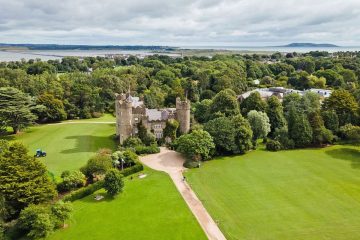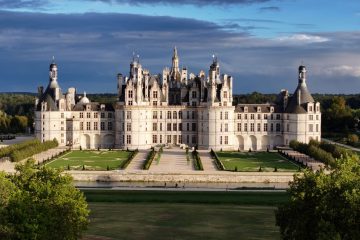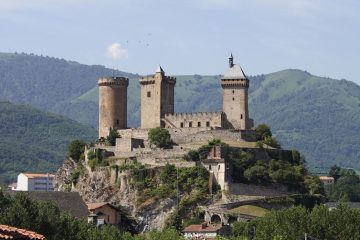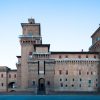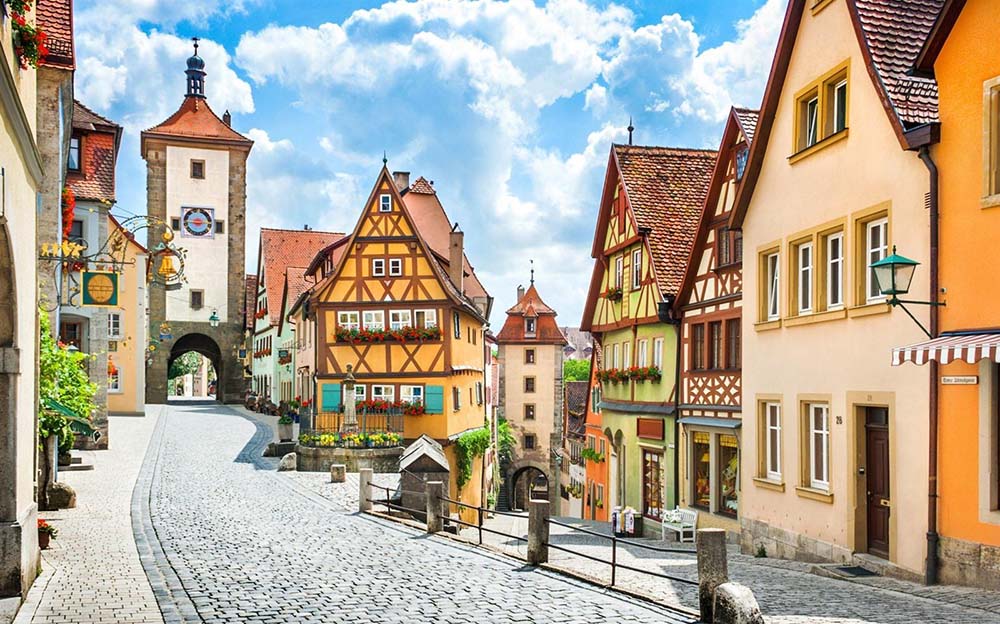
Exploring the medieval charm of Rothenburg ob der Tauber
Rothenburg ob der Tauber, one of Europe’s most enchanting medieval towns, offers a unique glimpse into the past. It is a place where history, architecture, and culture converge in a captivating experience. Nestled in the Franconia region of Bavaria, Germany, this town is renowned for its remarkably well-preserved medieval architecture. Its picturesque streets are a testament to the town’s rich history. Visitors wander through the cobblestone streets, pass half-timbered houses, and walk under ancient arches, feeling transported back in time.
Can’t wait to visit the city? Book your Rothenburg ob der Tauber tour online!
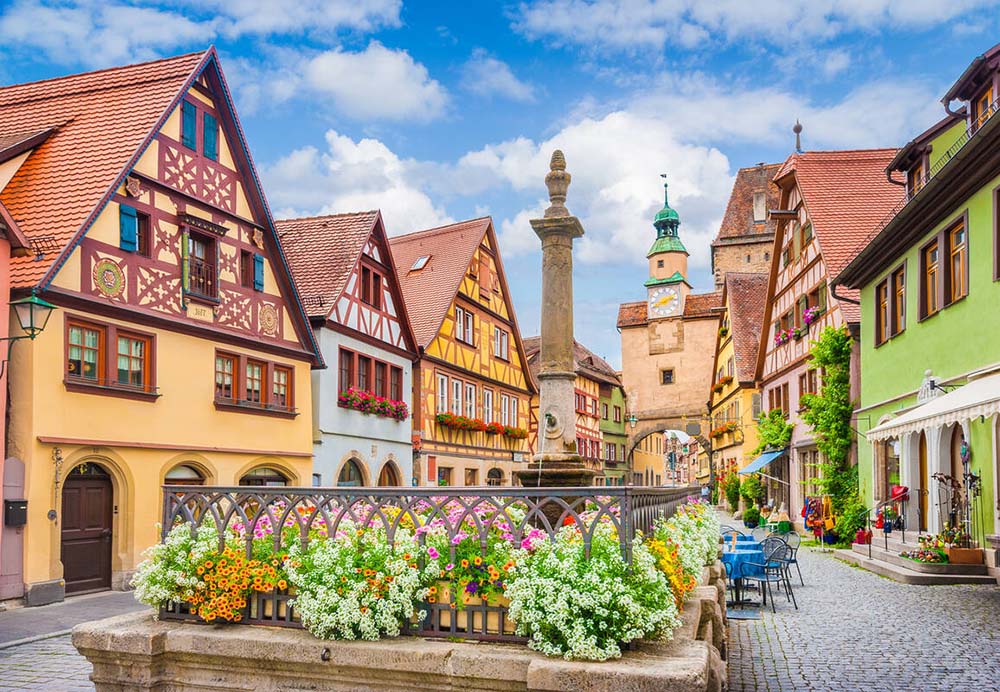
Rothenburg ob der Tauber: The rich history
Rothenburg ob der Tauber’s history intertwines deeply with medieval Europe. The town began as a small settlement in the 10th century. Over time, it gained significance and became a Free Imperial City in 1274. This status allowed it to govern itself and enjoy considerable autonomy, which contributed to its development as a thriving center of trade and commerce during the Middle Ages.
Rothenburg ob der Tauber played a crucial role in regional and international trade, owing to its strategic location along important trade routes. The wealth generated from trade led to the construction of many of the town’s iconic buildings, including its impressive city walls, fortifications, and numerous churches. These structures, many of which still stand today, provide a vivid window into the architectural and cultural heritage of the Middle Ages.
However, the town’s fortunes began to decline in the 16th century due to a combination of factors, including the devastation caused by the Thirty Years’ War and the shifting of trade routes. Despite these challenges, Rothenburg ob der Tauber managed to preserve much of its medieval character. This was largely due to its relative isolation and the lack of significant industrial development in the following centuries.

Architectural wonders of Rothenburg ob der Tauber
The architectural landscape of Rothenburg ob der Tauber is a treasure trove for those who appreciate medieval architecture. The town’s skyline is dominated by the imposing St. James’s Church (St. Jakobskirche), which was completed in the 15th century. This church is a masterpiece of Gothic architecture. It houses the famous “Holy Blood Altar” by Tilman Riemenschneider, one of the most significant works of German woodcarving from the Renaissance period.
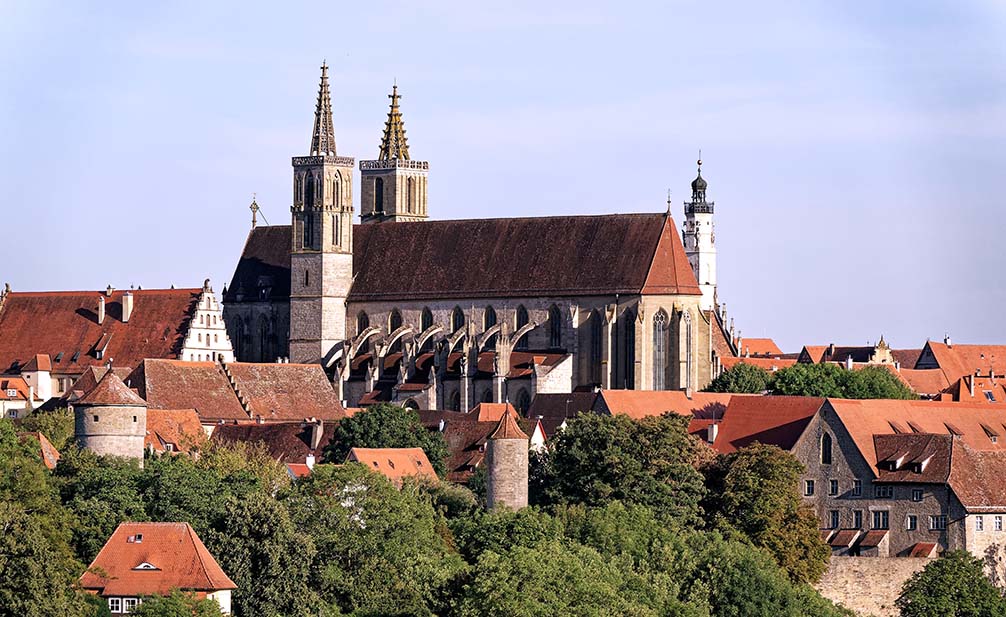
The town is also renowned for its well-preserved city walls, which encircle the old town and offer stunning panoramic views of the surrounding countryside. Meticulously maintained, these walls are complete with towers and gates. They allow visitors to walk along them and experience the same vantage points that medieval defenders once used to protect the town. Among the most famous of these towers is the Rödertor, a striking gate that serves as a symbol of the town’s historic fortifications.
In addition to its religious and defensive architecture, Rothenburg ob der Tauber is home to an array of half-timbered houses. These houses are quintessential examples of medieval German architecture. These buildings, with their distinctive wooden frames and colorful facades, line the narrow streets of the old town. They create a picturesque setting that has inspired artists, filmmakers, and tourists alike.
The enigmatic Rothenburg Castle
No visit to Rothenburg ob der Tauber would be complete without exploring the remnants of its once-majestic castle, the Burggarten. The Rothenburg Castle, originally built in the 12th century, played a significant role in the town’s history. It was constructed as a protective stronghold for the region, strategically positioned above the Tauber River, offering a commanding view of the surrounding lands. This castle was not only a defensive bastion but also a symbol of the town’s importance in the Middle Ages.
The earthquake of 1356 destroyed the original Rothenburg Castle, leaving much of the town in ruins. However, the remnants of the castle’s walls and foundations have been preserved, and the site is now known as the Burggarten, or Castle Garden. This garden, with its lush greenery and panoramic views of the Tauber Valley, offers a tranquil retreat for visitors. It also serves as a poignant reminder of the town’s storied past.
The Burggarten houses the Blasius Chapel, a small yet historically significant structure from the original castle complex. Furthermore, dating back to the 12th century, this chapel is one of the few surviving elements of Rothenburg Castle. It stands as a testament to the town’s resilience in overcoming adversity throughout its history. Visitors to the Burggarten can explore the chapel and the castle’s remains, enjoying the garden’s serene atmosphere.
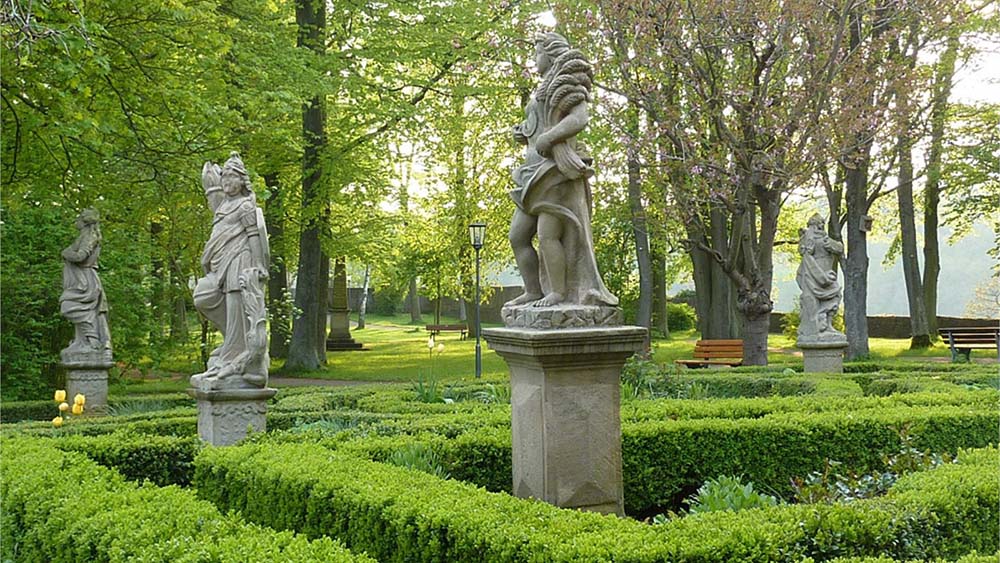
The cultural significance
Rothenburg ob der Tauber is a town of historical importance and a center of cultural heritage. The town’s cultural legacy is celebrated through festivals, museums, and traditions preserved and passed down for generations. One notable event is the “Reiterlesmarkt,” Rothenburg’s Christmas market, among the oldest and most famous in Germany. This market transforms the town into a winter wonderland, attracting visitors from around the world. Visitors come to experience its festive atmosphere and enjoy the traditional crafts on display.
The town is also home to several museums that offer insights into its history and culture. The Rothenburg Museum, housed in a former Dominican convent, contains a vast collection of artifacts. These include medieval weapons, religious art, and historical documents. Another must-visit is the Medieval Crime Museum, which provides a fascinating, albeit sometimes chilling, look at the legal practices and punishments of the past.
Furthermore, Rothenburg ob der Tauber has served as an inspiration for many artists and writers over the centuries. Countless paintings, photographs, and literary works have captured the town’s idyllic setting and timeless beauty, ensuring its legacy endures far beyond its physical borders.

Experiencing Rothenburg ob der Tauber today
Rothenburg ob der Tauber is a sought-after destination for travelers interested in medieval history and European charm. Additionally, the town’s commitment to preserving its historical character is clear in its well-maintained buildings, streets, and traditions. Visitors can explore the town at their own pace, absorbing the sights and sounds of a timeless place. Walking tours are a favored way to experience Rothenburg, offering insights into its history and architecture. Guided tours often visit key landmarks, including the Market Square, the Town Hall, and the picturesque Plönlein intersection.
The Plönlein, one of the town’s most photographed spots, exemplifies Rothenburg’s enduring appeal. Moreover, for a deeper understanding of the town’s past, a visit to the Rothenburg Town Hall Tower is recommended. Climbing this tower rewards visitors with breathtaking views of the town and the surrounding Tauber Valley. This perspective provides unique insights into Rothenburg’s layout and its harmonious relationship with the landscape.
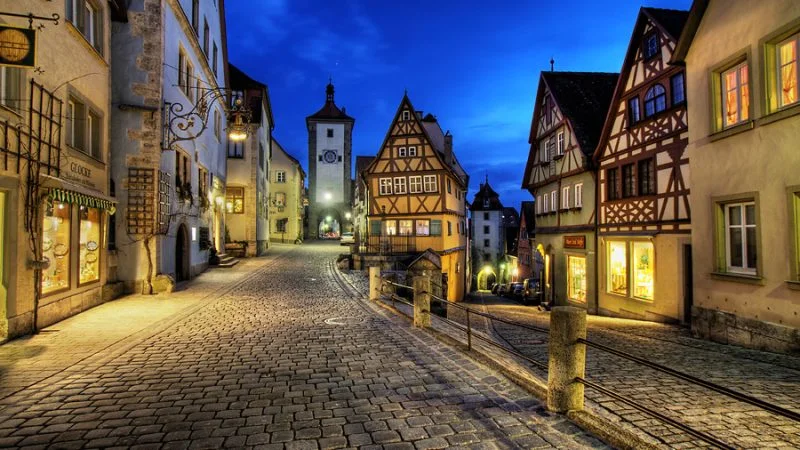
Preserving the legacy of Rothenburg ob der Tauber
Preserving Rothenburg ob der Tauber’s medieval character remains a priority for residents and local authorities. Efforts focus on protecting its architectural heritage, ensuring future generations can enjoy its historical and cultural significance. This commitment to preservation has enhanced the town’s candidacy for UNESCO World Heritage status, emphasizing its global importance.
In conclusion, Rothenburg ob der Tauber stands as a testament to the enduring appeal of medieval architecture and culture. Its well-preserved buildings, rich history, and vibrant traditions offer a unique window into the past. These elements provide visitors with an unforgettable experience. Whether you are an avid history enthusiast, an architecture lover, or someone seeking the charm of a bygone era, Rothenburg ob der Tauber offers a captivating experience. You should not miss this destination.

